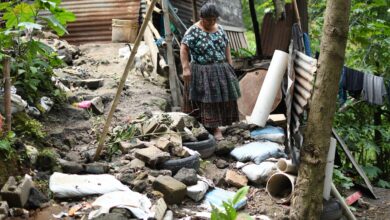Euthanasia in Latin America: Will There Be a Domino Effect?
The case of Martha Sepúlveda showed that euthanasia in Latin America is still very incipient. What other countries in the world have approved assisted death?.

In the most progressive cases, passive euthanasia is allowed, which is not acting or stopping the treatments of the disease. Photo: Unsplash
LatinAmerican Post | Santiago Gómez Hernández
Escucha este artículo
Leer en español: La eutanasia en América Latina: ¿Viene un efecto dominó?
Recently the media is abuzz with news of Martha Sepúlveda, the Colombian woman, who last Sunday would've been the first person in the Andean country to receive euthanasia for a non-terminal illness. Martha suffers from Amyotrophic Lateral Sclerosis, a degenerative disease, which she feared would become increasingly advanced.
You may also be interested in: It's Not Only In Your Country: Insecurity In Latin America
Since July, the Colombian Constitutional Court has allowed the right to a dignified death for non-fatal cases, but with intense physical or mental suffering due to injury or illness.
However, less than 24 hours before the procedure, the Colombian Pain Institute reported that it was suspending the procedure, arguing that "the termination criterion is not met, as taken into account in the first commission." Experts assure that this measure can be appealed, since what was dictated by the Constitutional Court would allow the patient to apply.
#LoMásLeído | #AlAireEnLaW | “Las sentencias de la Corte Constitucional rigen por ley desde el momento que se tomó la decisión que le dio valor a ese punto jurídico”: Nilson Pinilla https://t.co/c1ng9o0DuH ←
— W Radio Colombia (@WRadioColombia) October 12, 2021
Colombia is just one of the 7 countries in the world that allow dignified death or euthanasia for non-fatal cases. The first to approve it for non-fatal cases was the Netherlands, followed by Belgium, Luxembourg, Canada, Spain and New Zealand. Additionally, it is also allowed in some states within the United States and Australia.
Obviously, apart from Colombia, there is no other country in the region that has approved assisted suicide. In the most progressive cases, passive euthanasia is allowed, which is not acting or stopping the treatments of the disease.
Argentina
The southern country is one of the few Latin American countries that contemplates passive euthanasia. No other type of practice is allowed. However, a few days ago a draft law known as the "Alfonso Law" was known, which seeks precisely to allow the right to a dignified death.
The project is still in its early stages and the support it will achieve within Congress is not known with certainty. However, as long as Peronism maintains majorities, like abortion recently, it could become the second country in Latin America to allow assisted suicide.
Chile
In Chile, euthanasia is also on the path to legality. The law that allows people of legal age to request assisted death is being processed in the Senate, but only for cases of fatal diseases. Until now, the project contemplates euthanasia for incurable, irreversible, and progressive diseases.
Uruguay
In the most liberal and progressive country on this side of the world, euthanasia is still an illegal issue. However, several polls have found that the majority of Uruguayans are in favor of legalizing euthanasia or assisted death.
Mexico
Despite the fact that in Mexico there have been several bills that seek to allow euthanasia, so far all have been rejected. In the Aztec country, the only thing that is allowed is to give up treatments under the Anticipated Will law, but it is only approved in 14 states
Peru
In the Inca country, the case is complex. On the one hand, euthanasia is punishable by imprisonment, but recently, a court approved the request for the assisted suicide of a 44-year-old woman.
Last year, the court asked that the criminal code not be applied to the group of doctors who would help Ana Estrada Ugarte, who suffered from polymyositis.
In the rest of Latin America, progress is little. Those who help or collaborate with the voluntary death of a patient with a fatal or non-fatal but degenerative disease are still punished with prison.




